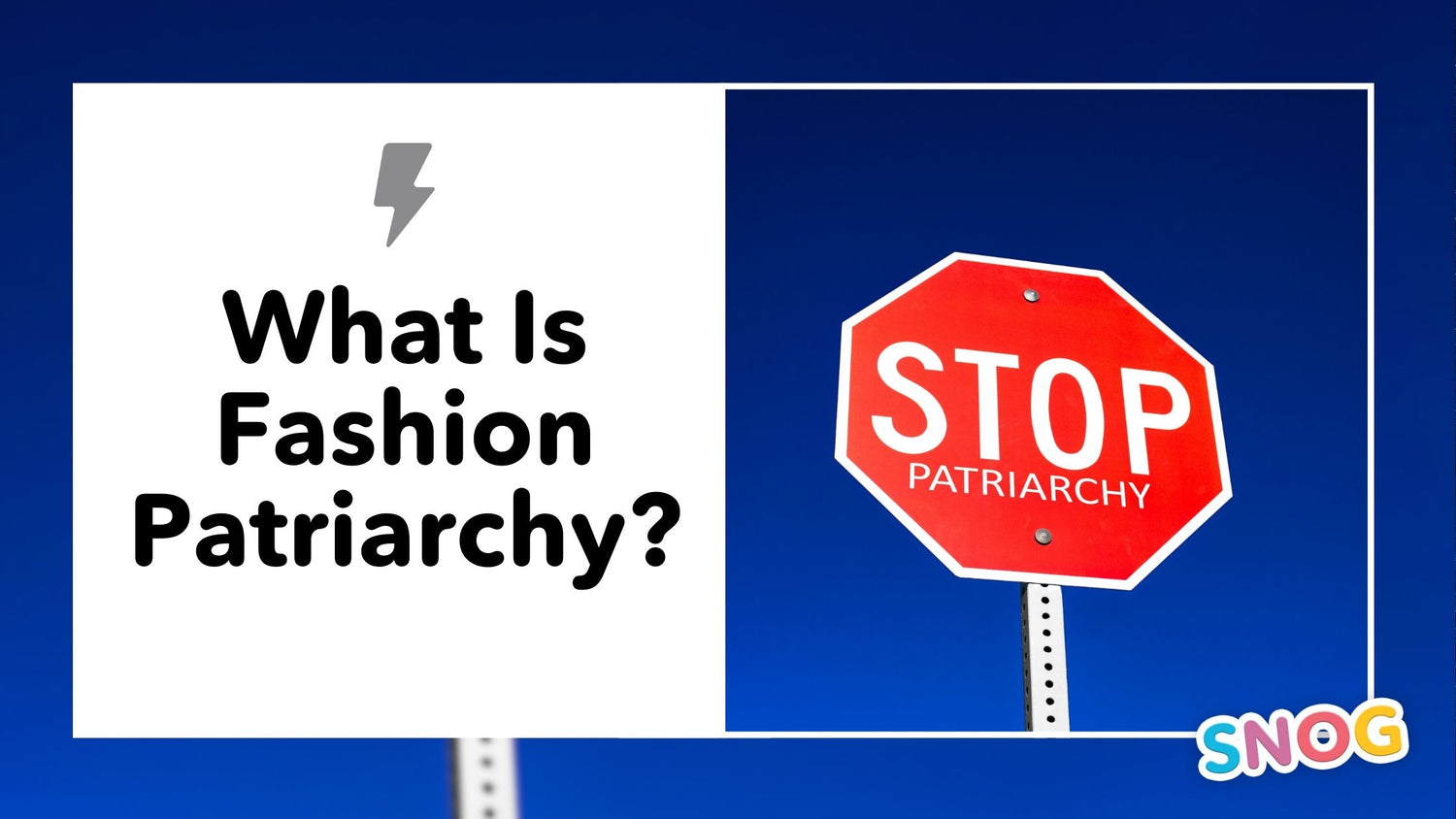Defying social expectations around fashion has been a feature of nearly all the key protest movements of the last 100 years. Think suffragettes fighting for the vote in trousers. Nation of Islam confounding expectations of African American men with their impeccable suits. Men growing their hair long to protest the Vietnam war. Feminists burning their bras in the 1960s in the fight for equal pay and equal rights. Drag Queens fighting riot police in their heels and fishnets at Stonewall.
Defining the Fashion Patriarchy
Who creates those social expectations in the first place? Who defines who is “allowed” to wear certain types of clothes, and how are these “rules” enforced. Enter the Fashion Patriarchy.
The Fashion Patriarchy isn’t some secret society operating from the shadows. It’s the systematic behaviours and prejudices that dominate the fashion industry and restrict all our choices in small but powerful ways.
It’s the fashion patriarchy that says clothes shops & websites have to be separated into “men’s” and “women’s” sections, and that clothes can’t just be clothes that anyone can wear. It’s the fashion patriarchy that says “women’s” clothes don’t need pockets and should button the opposite way to “men’s”. It’s the fashion patriarchy that says clothes should be available in a set of “standard” sizes that were defined 50 years ago and if you don’t fit the standard you’re the problem, not the clothes. It’s the fashion patriarchy that says clothes should be advertised using the smallest possible models, and even “plus size” models (ie a size 12) should have the kind of flawless body that 99.9% of people could never achieve.
The Impact of Fashion Patriarchy on Identity and Expression
These aren’t neutral choices. It’s not just about aesthetics or what “looks good”. Being excluded from mainstream fashion, whether because of your size, or body shape, or height, or gender expression, causes huge damage to people’s mental health. More than 5% of people will suffer with an eating disorder at some point in their lives. Thousands die from them every year. And millions upon millions of people suffer from low self esteem and depression throughout their lives because of the choices the fashion patriarchy makes.
The impact of the Fashion Patriarchy extends beyond inconvenience. It profoundly impacts how people express their identities and perceive themselves. By strictly categorising clothes, the industry not only limits expression but reinforces harmful stereotypes about gender and body image. This restrictive environment often alienates those who do not conform to traditional gender norms, such as transgender and non-binary humans, by denying them the freedom to express themselves through fashion without judgment or barriers.
Towards an Inclusive Future: Steps for Brands
For the fashion industry to evolve, every brand has to get on board and take actual steps towards REAL inclusivity, no more fat washing please. This includes, at a bare minimum abandoning the 'traditional' sizing system (that doesn't work) in favour of actually realistic body measurements. Using models of all sizes and backgrounds, and designing clothes that cater to more than the tiny percentage of people who fit into the 'beauty standard'. While we are here, let's have a look at marketing strategies, that should shift to promote a more inclusive version of 'beauty', one that celebrates diversity rather than conforming to the most narrow of standards.
They are choices. If you can choose to make a 'curve' range you can choose to make all your clothes in a full range of sizes. If you can choose to use a size 4 model you can choose to use a size 24 one. If you can choose to split your store into men’s and women’s sections you can choose not to.
Why the Snag not?







0 comments